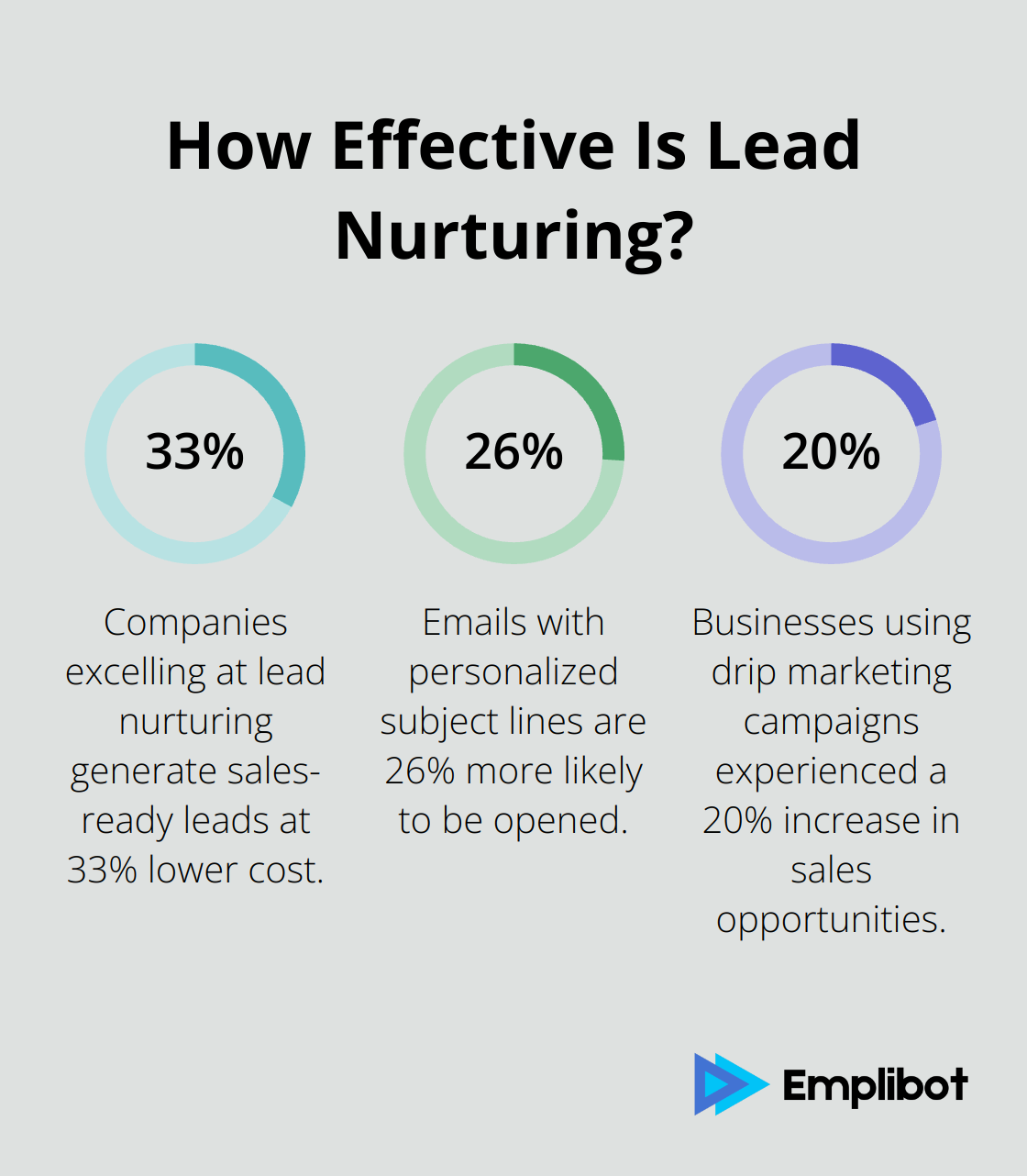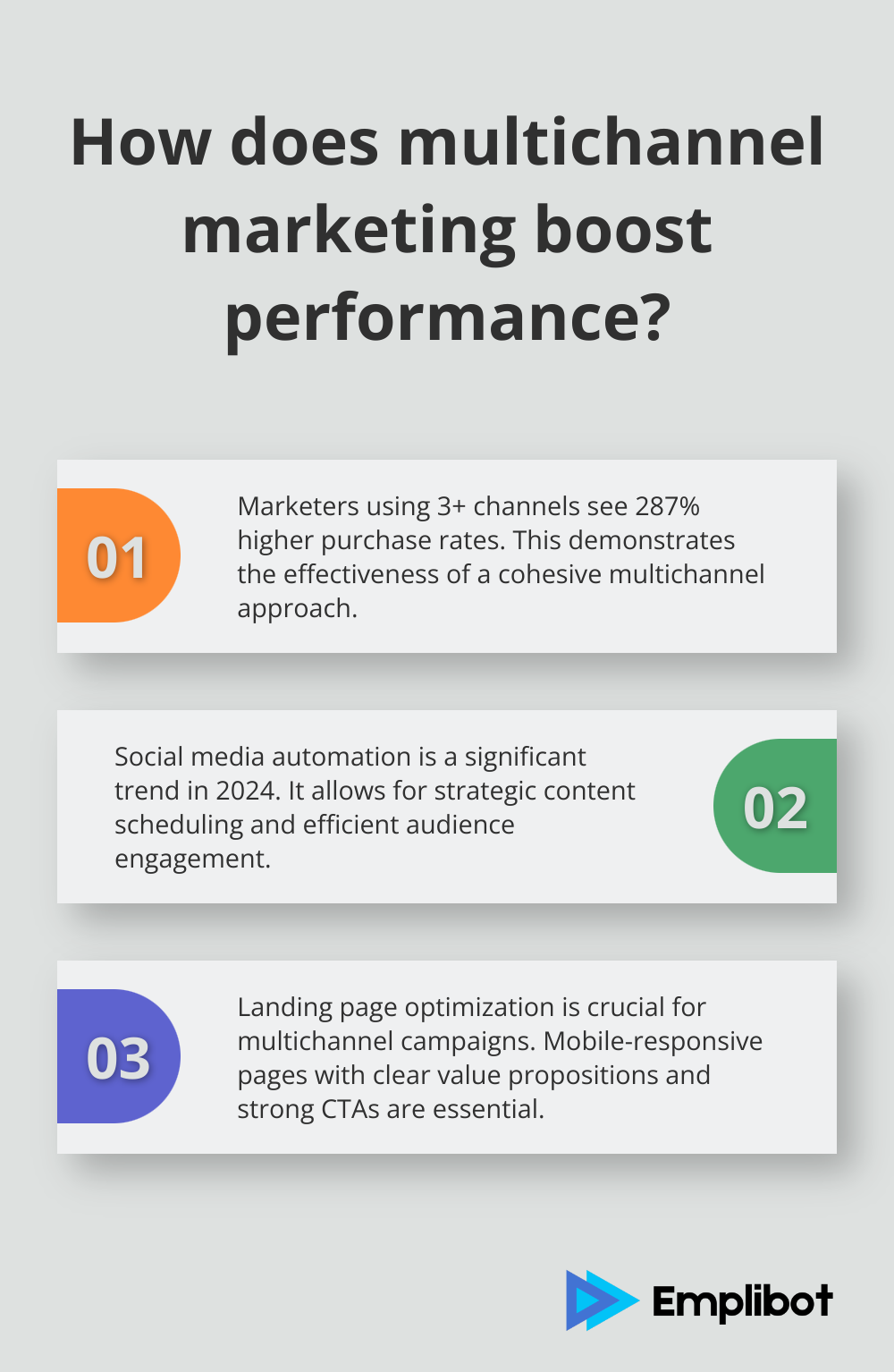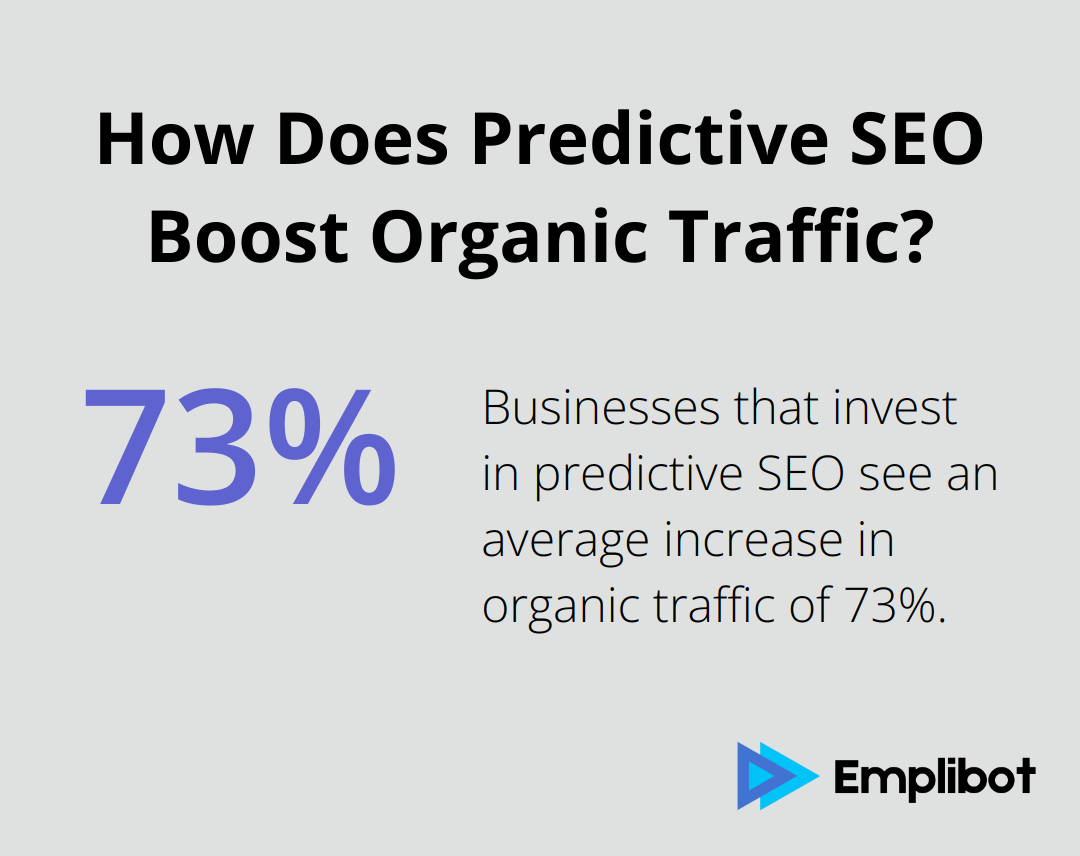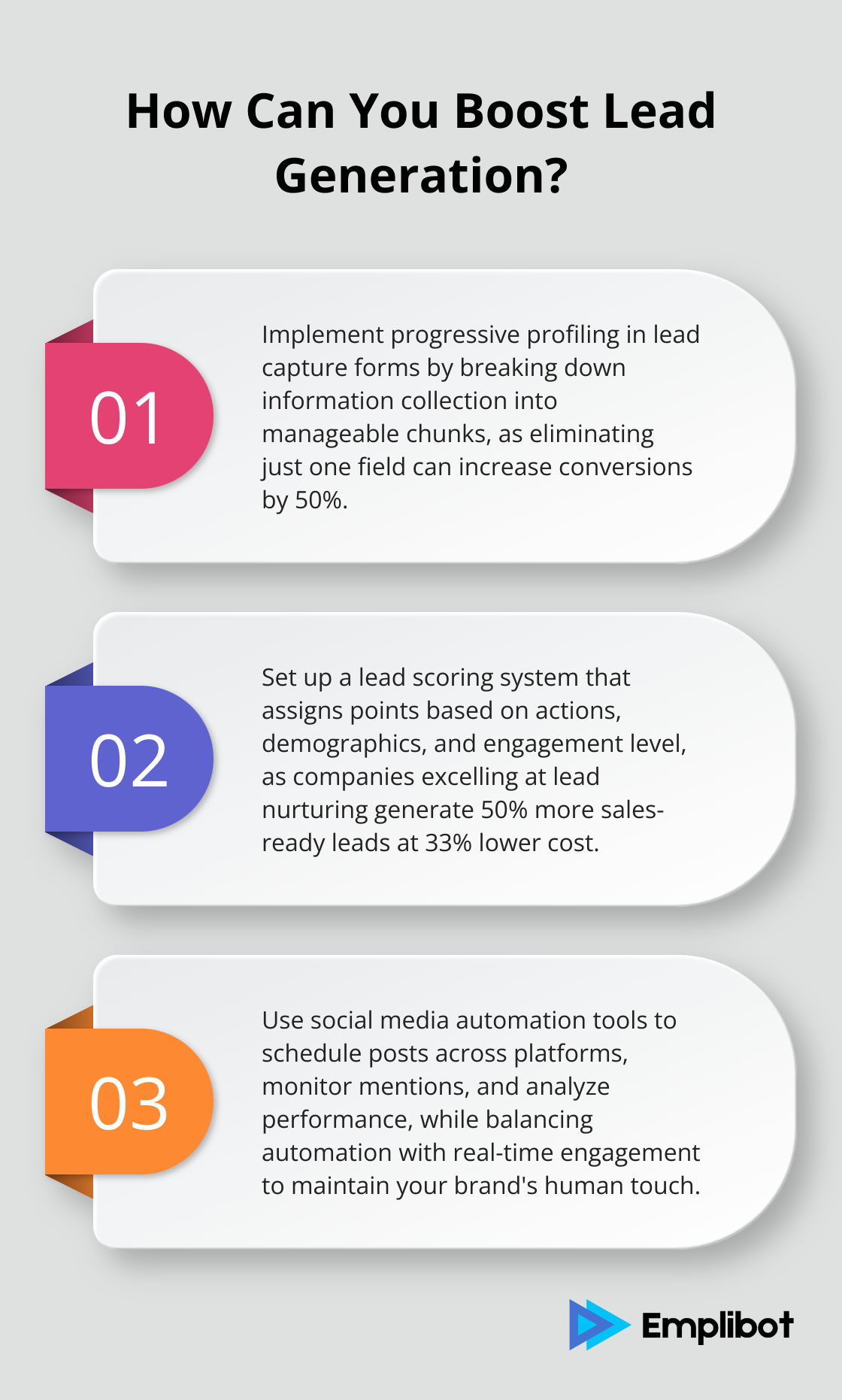Enterprise marketing automation has revolutionized how businesses engage with their customers. At Emplibot, we’ve seen firsthand how these powerful tools can transform marketing strategies and drive growth.
In this post, we’ll explore the essential components of enterprise marketing automation that are reshaping the industry. From lead generation to customer relationship management, we’ll break down the key elements that can supercharge your marketing efforts.
How to Supercharge Lead Generation and Nurturing
Enterprise marketing automation has transformed lead generation and nurturing processes. This chapter explores how automation revolutionizes these critical aspects of marketing strategies.
Streamline Lead Capture
Automated lead capture forms are essential tools in digital marketing. These forms, which can be embedded on websites, landing pages, or social media profiles, automatically collect and store visitor information. This automation eliminates manual data entry and reduces human error.
Research shows that eliminating just one field can increase conversions by a whopping 50%. This approach breaks down the information collection process into manageable chunks, making it less daunting for potential leads.
Score and Segment Leads
After capturing leads, determining their quality and potential value becomes paramount. Lead scoring assigns points to leads based on their actions, demographics, and engagement level. This prioritizes follow-ups and allocates resources effectively.

A Forrester report states that companies excelling at lead nurturing generate 50% more sales-ready leads at 33% lower cost. Implementing a robust lead scoring system allows businesses to focus efforts on the most promising prospects.
Segmentation groups leads based on shared characteristics, enabling more targeted and personalized marketing efforts. A MailChimp study found that segmented email campaigns had a 14.31% higher open rate than non-segmented campaigns.
Craft Personalized Email Campaigns
Email remains one of the most effective channels for nurturing leads. Automation allows for highly personalized email campaigns that speak directly to each lead’s interests and needs.
Emails with personalized subject lines are 26% more likely to be opened, underlining the importance of tailoring messages to each audience segment.
Implement Drip Marketing Sequences
Drip marketing involves sending a series of pre-planned messages to leads over time. These sequences can be triggered by specific actions or time intervals, ensuring that leads receive relevant information at the right moment in their buyer’s journey.
A Pardot study revealed that businesses using drip marketing campaigns experienced a 20% increase in sales opportunities. This approach keeps brands top-of-mind and gradually builds trust with potential customers.
The power of automation in lead generation and nurturing is undeniable. As we move forward, let’s explore how these tools extend beyond initial lead capture to manage campaigns across multiple channels effectively.
How to Master Multichannel Campaign Management
In today’s digital landscape, effective multichannel campaign management is essential for reaching and engaging your target audience. A well-executed multichannel strategy can significantly boost marketing performance.
Seamless Content Distribution Across Channels
Distributing content across multiple channels is no longer optional – it’s a necessity. A study by Omnisend found that marketers using three or more channels in their campaigns earned a 287% higher purchase rate compared to single-channel campaigns. This highlights the importance of a cohesive multichannel approach.

To achieve this, identify your core channels. These typically include your website, email, social media platforms, and potentially offline touchpoints. Then, tailor your content for each channel while maintaining a consistent brand message. For instance, you can repurpose a long-form blog post into a series of social media posts, an infographic, and a newsletter feature.
Harnessing the Power of Social Media Automation
Social media automation transforms multichannel campaigns. According to Sprout Social, social media automation has become a significant trend in 2024. This doesn’t mean setting and forgetting – it’s about strategically scheduling content and engaging with your audience more efficiently.
Use tools to schedule posts across platforms, monitor mentions, and analyze performance. This allows you to maintain a consistent presence without constant monitoring of your social accounts. However, balance automation with real-time engagement to keep your brand’s human touch.
Optimizing Landing Pages for Conversion
Your landing pages are often the final destination in your multichannel campaigns, making their optimization important. Focus on creating landing pages that align with your campaign messages and offer clear value propositions. Use compelling headlines, concise copy, and strong calls-to-action. Ensure your landing pages are mobile-responsive.
Leveraging A/B Testing for Continuous Improvement
A/B testing is your secret weapon for refining multichannel campaigns. It allows you to make data-driven decisions rather than relying on guesswork.
Start by testing one element at a time – whether it’s email subject lines, ad copy, or landing page layouts. Use the insights gained to continuously optimize your campaigns. What works for one audience segment might not work for another, so segment your tests accordingly.
Mastering multichannel campaign management is an ongoing process. The next step in enhancing your marketing efforts involves integrating these strategies with robust Customer Relationship Management (CRM) systems. This integration allows for even more personalized and effective campaigns, as we’ll explore in the next section.
How CRM Integration Boosts Marketing Automation
Unified Customer Data Management
Customer Relationship Management (CRM) integration transforms enterprise marketing automation. It creates a seamless flow of data between marketing and sales, enabling more targeted and effective campaigns. Centralizing customer data forms the foundation of effective CRM integration. This unified approach allows marketers to access a complete view of each customer, including their interactions, preferences, and purchase history.

To implement this, audit your current data sources. Identify all touchpoints where customer data is collected, from website visits to support tickets. Then, use a robust CRM system to consolidate this information. This creates a single source of truth for all customer-related data.
Automated Customer Profiling
With centralized data, automated customer profiling becomes possible. This process creates detailed customer personas based on behavior, demographics, and engagement patterns.
To leverage this, set up automated tagging systems in your CRM. These tags can be based on customer actions (such as downloading a whitepaper or attending a webinar). Over time, these tags build comprehensive profiles that inform your marketing strategies.
Aligning Sales and Marketing Efforts
CRM integration bridges the gap between sales and marketing teams. This alignment is critical for achieving growth and improving efficiency.
Implement a lead scoring system that both teams agree on. This ensures that marketing passes only qualified leads to sales, improving efficiency. Set up regular meetings between sales and marketing to review lead quality and refine the scoring criteria.
Predictive Analytics for Customer Behavior
Predictive analytics is perhaps the most powerful aspect of CRM integration. It uses historical data to forecast future customer behavior. Businesses that invest in predictive SEO see an average increase in organic traffic of 73%.
To harness this power, start small. Focus on one key metric, such as customer churn or lifetime value. Use your CRM data to identify patterns that precede these events. Then, create automated workflows that trigger when a customer shows signs of these patterns.
For example, if data shows that customers who haven’t logged in for 30 days are likely to churn, set up an automated re-engagement campaign targeting these users. Overcoming integration challenges is crucial for maximizing the benefits of CRM integration in marketing automation.
Final Thoughts
Enterprise marketing automation has transformed business marketing strategies. Lead generation, multichannel campaign management, and CRM integration form the core of robust automation systems. These components of enterprise marketing automation increase efficiency, improve engagement, and enable personalized marketing efforts. The future promises more sophisticated AI-driven analytics and real-time personalization across all customer touchpoints.

Businesses must adapt to new technologies and strategies in this evolving landscape. Embracing enterprise marketing automation can streamline processes and drive growth in the competitive digital marketplace. Success depends on staying flexible and open to emerging trends and tools (such as voice search integration).
At Emplibot, we remain committed to the forefront of these advancements. We help businesses effectively automate their content marketing efforts. Our focus on innovation ensures that our clients can leverage the latest in enterprise marketing automation to achieve their goals.

